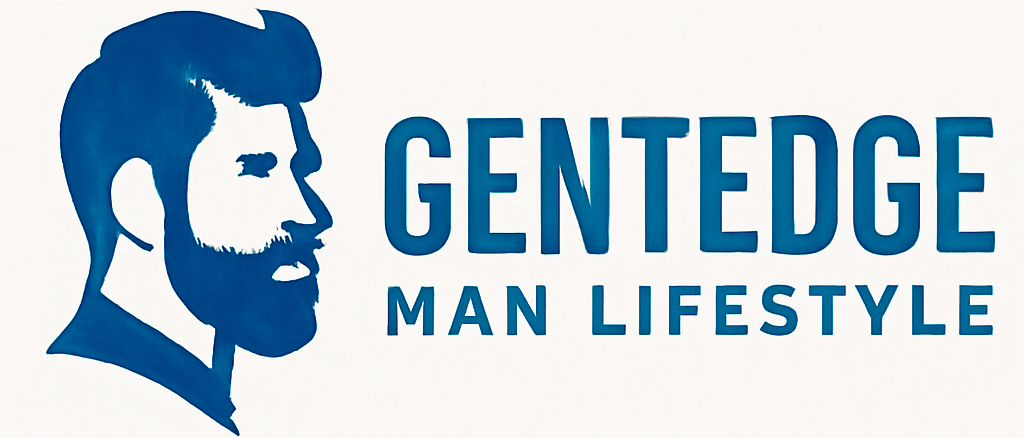The shirt and tie combination remains one of the most powerful style statements a man can make. Whether you’re heading to a business meeting closing a major deal or attending a formal event that demands sophistication this classic pairing never fails to elevate your presence and command respect.
We’ve all experienced that moment when a perfectly coordinated shirt and tie transforms not just our appearance but our entire confidence level. The right combination can make you feel unstoppable while the wrong one can leave you questioning your style choices all day long.
Mastering the art of shirt and tie coordination isn’t just about following basic color rules – it’s about understanding proportions textures and the subtle details that separate well-dressed men from the crowd. From choosing the perfect collar style to selecting tie patterns that complement your shirt we’ll guide you through everything you need to create winning combinations that work for any occasion.
Classic White Dress Shirt and Navy Tie Combination
This timeless pairing forms the foundation of every man’s formal wardrobe. We consider it the most versatile combination because it works across all occasions and suit colors.
Choosing the Perfect White Shirt Fit
Collar selection determines how professional your shirt and tie outfit appears. We recommend point collars for most face shapes since they provide clean lines and work with various tie knots. Spread collars complement wider faces and accommodate larger tie knots like the Windsor.
Sleeve length should allow 1/4 to 1/2 inch of shirt cuff to show beyond your suit jacket sleeve. We measure this by extending our arms naturally at our sides. The cuff should sit at the base of your thumb when your arms hang relaxed.
Body fit needs to be customized without being restrictive. We look for shirts that allow us to pinch about an inch of fabric on each side at the waist. The shoulder seams should align with your natural shoulder points.
Neck sizing requires enough room to fit one finger between your neck and the collar when buttoned. We avoid collars that gap away from the neck or create bulging around the tie knot area.
Selecting Navy Tie Patterns and Textures
Solid navy ties create the most elegant shirt and tie combination with white dress shirts. We choose silk ties in navy for formal business settings and cotton or linen blends for casual professional environments.
Stripe patterns add visual interest while maintaining sophistication. We prefer thin diagonal stripes in silver or white on navy backgrounds. Rep stripes work particularly well for conservative business environments.
Textured weaves like grenadine or basketweave provide subtle depth to your outfit. We select these textures when we want to elevate a simple white shirt without adding bold patterns.
Pattern sizing should complement your body frame and shirt proportions. We choose smaller patterns for slender builds and slightly larger patterns for broader shoulders and chest areas.
Coordinating Suit Colors and Accessories
Charcoal suits pair flawlessly with white shirts and navy ties for the most classic business look. We add black leather shoes and matching belt to complete this sophisticated combination.
Navy suits create a monochromatic effect with navy ties that appears refined and modern. We recommend brown leather accessories to warm up this color scheme and add visual contrast.
Gray suits in light to medium tones work exceptionally well with this shirt and tie pairing. We choose silver or pewter accessories like watches and cufflinks to maintain the cool color palette.
Black shoes remain our top choice for formal occasions and business settings. We pair them with black leather belts and silver accessories for evening events or important meetings.
Light Blue Shirt and Burgundy Tie Ensemble

Building on classic combinations, we explore how light blue and burgundy create one of the most sophisticated color pairings in men’s formal wear. This ensemble offers a refined alternative to traditional white shirt combinations while maintaining professional elegance.
Understanding Complementary Color Theory
Light blue and burgundy work together because they sit opposite each other on the color wheel, creating natural visual harmony. We see this complementary relationship deliver rich contrast that’s elegant without being overwhelming. The pairing grounds itself in color science, where opposite hues enhance each other’s vibrancy while maintaining balance.
Professional settings particularly benefit from this combination since it provides subtle distinction without breaking formal dress codes. Light blue shirts offer a softer alternative to stark white while burgundy ties add depth and sophistication. Men choosing this pairing achieve a look that’s both understated and memorable, perfect for standing out professionally without appearing flashy.
Fabric Weight Considerations for Professional Settings
Lightweight cotton or poplin fabrics work best for light blue dress shirts in office environments, providing breathability and comfort throughout long workdays. We recommend these materials because they maintain crispness while allowing natural movement and temperature regulation.
Burgundy ties perform optimally in medium weight silk, which hangs properly and maintains sharp knot formation. Heavier tie fabrics can appear bulky against lightweight shirts, disrupting the outfit’s clean lines. Matching fabric weights ensures both pieces complement rather than compete with each other.
Professional appearances depend on avoiding clashing textures, so we suggest testing how fabrics interact before finalizing outfit choices. The goal remains achieving a polished look where all elements work harmoniously together.
Seasonal Styling Variations
Spring and summer styling calls for lighter fabric weights to maintain comfort in warmer weather. We recommend cotton or linen light blue shirts paired with silk ties in lighter weaves or knit fabrics. These choices prevent overheating while preserving the combination’s sophisticated appeal.
Fall and winter seasons allow for heavier shirting fabrics like twill or flannel in light blue tones. Burgundy ties in wool or grenadine weaves add warmth and texture appropriate for colder months. These thicker materials provide visual weight that balances well with heavier seasonal clothing.
Layering opportunities expand this combination’s versatility across seasons. Navy or charcoal suit jackets create classic silhouettes that adapt to any business or semi formal occasion. We find this flexibility makes the light blue and burgundy pairing a smart investment for year round professional wardrobes.
Striped Shirt and Solid Tie Pairing

Striped shirts paired with solid ties create one of the most versatile and foolproof combinations in men’s formal wear. This classic pairing balances pattern with simplicity, preventing visual overwhelm while maintaining sophisticated style.
Mixing Patterns Without Overwhelming the Look
Balance becomes crucial when we combine striped shirts with solid ties to avoid pattern conflicts. Narrow or subtle stripes work best as they provide visual interest without competing for attention with other elements of our outfit. Wide stripes require more careful consideration since they make bolder statements and can easily dominate the overall look.
Proportion plays a important role in achieving harmony between shirt patterns and tie choices. Thin striped shirts allow us greater flexibility with tie colors and textures, while bold striped patterns demand simpler tie selections. Pattern scale coordination ensures our outfit maintains visual coherence rather than creating competing focal points.
Visual weight distribution helps us create balanced outfits that look intentional rather than accidental. Solid ties serve as anchoring elements that ground patterned shirts, providing our eyes with a place to rest. This combination technique works consistently across different style contexts and formality levels.
Stripe Width and Tie Color Guidelines
Thin stripes offer the most versatility for tie pairings since they create subtle texture without overwhelming visual impact. These delicate patterns complement solid ties in virtually any color, allowing us to experiment with bolder tie choices. Small scale stripes also permit slight pattern mixing with ties featuring minimal textures or very subtle designs.
Wide stripes require solid ties or extremely subtle patterns to maintain visual balance throughout our outfit. Bold striped shirts work best with solid dark ties in colors like navy, burgundy, or deep green. These combinations ensure our outfit remains cohesive rather than chaotic.
Color coordination enhances the overall harmony of striped shirt and solid tie combinations. We should select tie colors that either complement existing stripe colors or create deliberate contrast for visual interest. Blue striped shirts pair beautifully with burgundy or dark green ties, while contrasting colors like orange can create attention grabbing looks when used thoughtfully.
Business Casual vs Formal Applications
Formal settings demand understated elegance through striped shirts paired with solid dark ties in navy, black, or deep red. Professional environments require us to maintain conservative color palettes that communicate competence and reliability. Suit coordination becomes essential, with charcoal, navy, or gray suits providing the perfect backdrop for these classic combinations.
Business casual environments allow greater flexibility in our striped shirt and solid tie selections. Lighter colored striped shirts work well with vibrant solid ties, creating approachable yet professional appearances. Creative industries often permit more adventurous color combinations while still maintaining the balance between striped patterns and solid tie choices.
Social events provide opportunities for expressing personality through bolder tie colors and more relaxed stripe patterns. Bright colored ties paired with casual striped shirts can showcase our style preferences while maintaining the sophisticated balance this combination provides. These settings allow us to experiment with different color theories and seasonal considerations without compromising professional appropriateness.
Checkered Shirt and Textured Tie Outfit

Checkered shirts paired with textured ties create sophisticated combinations that add visual interest while maintaining professional elegance. We’ll explore how to master this versatile pairing that works across seasons and occasions.
Balancing Bold Patterns with Neutral Tones
Neutral tie colors serve as perfect counterbalances when we wear bold checkered shirts like gingham or plaid. Navy, grey, and charcoal ties offset vibrant shirt patterns without creating visual chaos in professional settings. These understated shades prevent outfits from appearing too busy while maintaining the sophisticated edge that checkered patterns provide.
Professional environments benefit most from this balanced approach, where neutral textured ties anchor bold shirt patterns effectively. Business meetings and formal occasions call for this strategic color coordination that demonstrates refined taste. Smart styling choices like these show attention to detail that colleagues and clients notice immediately.
Gingham and Plaid Shirt Options
Gingham shirts feature small, evenly spaced checks that offer incredible versatility for various tie styles and occasions. These preppy yet polished shirts work exceptionally well in business casual and smart casual settings where we need approachable professionalism. Small check patterns create visual interest without overwhelming the overall look when paired with textured ties.
Plaid shirts showcase larger, more varied color blocks that make bolder statements than their gingham counterparts. We recommend pairing these striking patterns with simpler tie textures to avoid overcomplicating the ensemble. Plaid works particularly well for creative environments and casual Friday outfits where personal style can shine through professional attire.
Both options provide excellent foundations for textured tie pairings, though gingham offers more conservative styling while plaid allows greater creative expression.
Knit and Wool Tie Selections
Knit ties bring subtle sophistication through their matte finish, which contrasts beautifully with the smoothness of checkered shirts. Their understated texture enhances the outfit’s tactile appeal without competing with shirt patterns for attention. We find these ties particularly effective during autumn and winter months when their substantial feel matches seasonal styling preferences.
Wool ties offer similar benefits with added warmth and richness that complement checkered shirts perfectly. These textured options work exceptionally well in relaxed business environments where traditional silk ties might feel too formal. Their natural fibers create depth that enhances rather than distracts from checkered shirt patterns.
Both knit and wool selections provide the textural contrast needed to make checkered shirts shine while maintaining the balanced sophistication that professional settings demand.
French Cuff Shirt and Silk Tie Combination

French cuff shirts paired with silk ties represent the pinnacle of formal menswear elegance. This sophisticated combination elevates any outfit with refined details that distinguish discerning gentlemen from the crowd.
Formal Evening and Special Occasion Styling
Formal evening events require meticulous attention to detail when styling French cuff shirts and silk ties. We recommend starting with a crisp white French cuff shirt featuring a turndown or wing collar for maximum versatility. Black tie dress codes demand a classic black silk bow tie paired with a tuxedo featuring satin lapels. Navy ties create sharp professional looks when matched with white French cuff shirts for business galas and award ceremonies.
Burgundy silk ties offer elegant contrast against light blue French cuff shirts for sophisticated evening occasions. Black ties provide striking formal appearances when coordinated with gray shirts for upscale dinner parties. White tie occasions call for white wing collar shirts with piqué bib fronts and white bow ties, though these ultra formal events are increasingly rare.
Essential accessories complete the formal evening ensemble with black patent leather shoes and matching dress socks. Cummerbunds or formal vests add traditional touches to tuxedo combinations. Coordination principles ensure each element complements the others without competing for attention.
Cufflink Selection and Coordination
Cufflink materials should harmonize with other metal accessories in your outfit for cohesive styling. Silver cufflinks complement white gold watches and silver tie bars perfectly. Platinum options offer understated luxury for the most discerning gentlemen. Gold cufflinks coordinate beautifully with gold belt buckles and warm toned watch cases.
Design considerations range from classic simplicity to subtle gemstone accents for added sophistication. Mother of pearl cufflinks provide timeless elegance without overwhelming the overall look. Enamel details add color coordination opportunities when matched to tie patterns or shirt accents.
Proportional balance ensures cufflinks enhance rather than dominate your French cuff shirt presentation. Larger cufflinks work best with broader shirt cuffs and wider tie knots. Smaller designs complement slim fit shirts and narrow tie styles for modern proportions.
Premium Fabric Choices and Investment Pieces
Egyptian cotton shirts offer superior breathability and softness for comfortable all day wear. Sea Island cotton provides exceptional durability while maintaining luxurious feel against the skin. Long staple cotton fibers create smoother shirt surfaces that drape elegantly under suit jackets.
High grade silk ties maintain their rich luster and resist wrinkles better than standard silk alternatives. Premium silk spun from quality cocoons offers superior shape retention over years of wear. Mulberry silk represents the finest option for discerning gentlemen seeking lasting value.
Investment considerations justify higher upfront costs through extended garment lifespans and maintained appearance quality. Premium fabrics retain their color vibrancy and structural integrity through many cleanings. Cost per wear calculations demonstrate the economic wisdom of choosing quality over quantity in formal wardrobe pieces.
Maintenance advantages of premium fabrics include easier care requirements and professional cleaning results. Quality materials resist common wear patterns like collar fraying and tie stretching. Long term value emerges through sustained elegance that cheaper alternatives cannot match.
Casual Button-Down and Knit Tie Look

We’re stepping away from rigid formality to explore how casual button down shirts paired with knit ties create versatile combinations that bridge professional polish and relaxed comfort. This approach offers the perfect balance for men seeking sophisticated style without overwhelming formality.
Weekend and Smart-Casual Styling Approaches
Weekend styling demands a lighter touch when we coordinate shirt and tie combinations for smart casual occasions. Softer color palettes like muted blues, gentle grays, and warm earth tones replace the stark contrast of traditional business attire. Patterned ties featuring paisley or polka dots add personality when paired with solid shirts, creating visual interest without crossing into overly formal territory.
Bold tie choices in brighter hues make confident statements against neutral shirt backgrounds, particularly effective for casual Fridays or dinner outings. Creative professionals often embrace this flexibility, using weekend styling as an opportunity to express individual taste while maintaining sophistication. Smart casual environments welcome experimentation with texture combinations, allowing knit ties to showcase their unique appeal alongside relaxed button down shirts.
Cotton and Linen Shirt Options
Cotton shirts provide the foundation for casual tie combinations with their smooth finish and exceptional versatility across seasons. These breathable fabrics work seamlessly from business casual meetings to weekend social events, offering comfort without sacrificing style. Linen options excel in warmer weather and summer smart casual settings, where their lightweight texture and natural breathability become essential advantages.
Both fabric choices complement knit ties beautifully, with cotton’s structured appearance balancing the textured surface of knit materials. Linen’s inherent relaxed character enhances the casual aesthetic we’re building, creating combinations that feel effortless yet intentionally styled. Lighter wool ties also pair effectively with both cotton and linen shirts, expanding our options for creating polished casual looks.
Relaxed Tie Knot Techniques
Four in hand knots deliver the relaxed asymmetry that casual shirt and tie combinations require for authentic style. This technique creates slightly narrower, less bulky results compared to traditional Windsor knots, maintaining proportion balance with knit ties and button down collars. The effortless appearance we achieve with four in hand knots perfectly complements the casual aesthetic while preserving necessary neatness.
Avoiding overly structured knot styles prevents our casual combinations from appearing stiff or overly formal. Knit ties respond particularly well to relaxed knotting techniques, as their texture and flexibility work against rigid, symmetrical presentations. The natural drape and slight irregularity of four in hand knots enhance the approachable sophistication that makes casual shirt and tie styling so appealing for modern professional wardrobes.
Color Coordination Rules for Shirt and Tie Outfits

Understanding color theory transforms your shirt and tie combinations from ordinary to exceptional. We’ll explore the essential principles that create harmonious, professional looks.
Primary and Secondary Color Matching
Primary colors (red, blue, yellow) and secondary colors (green, orange, purple) form the foundation of sophisticated color coordination. Complementary color schemes pair colors opposite each other on the color wheel, such as a blue shirt with an orange tie, creating high contrast and striking visual impact. Triadic schemes use three colors evenly spaced on the wheel, like a blue shirt with a red tie, producing balanced contrast that’s less intense than complementary pairs.
Monochromatic schemes involve different shades and tints of a single color, such as a navy tie with a light blue shirt, resulting in subtle, refined coordination. Solid colored shirts and ties work best for beginners, with the classic white shirt and navy tie combination serving as our most reliable starting point. Light colored shirts typically pair well with darker ties to maintain proper visual balance and professional appearance.
Neutral Base Building Strategies
Neutral colors like white, light blue, grey, and beige serve as excellent foundations because they allow versatile matching opportunities. We recommend starting with neutral colored shirts when you’re uncertain, then adding ties with pops of color or interesting patterns to create polished looks. Neutral tones effectively tone down bold or vibrant tie colors, creating the perfect balance between conservative and expressive styling.
Light grey shirts pair beautifully with dark grey jacquard ties for timeless monochromatic effects that work across seasons. We’ve found that coordinating ties with patterned shirts requires careful attention to scale and color repetition. Solid ties that pick up accent colors from shirt patterns create unified appearances, especially when the tie’s pattern size contrasts with the shirt’s pattern size.
Avoiding Common Color Clash Mistakes
Temperature group mixing causes the most common color clashes when we pair warm and cool colors without proper balance. Overmatching creates visual flatness, such as using tie and shirt colors in exactly the same shade, which eliminates the outfit’s visual interest entirely. We always aim for contrast or complementary shades instead of exact matches to maintain ever-changing appeal.
Tonal differences between shirt and tie matter significantly since ties should typically be darker than shirts for balanced contrast. Ignoring this principle creates washed out looks that lack professional polish. We must also consider suit color and occasion context because overall outfit harmony depends on how the shirt and tie integrate with the broader ensemble and event requirements.
Essential Tie Knots for Different Shirt Collars

Selecting the perfect tie knot for your shirt collar creates a polished foundation for any formal or business outfit. Different collar styles require exact knot techniques to achieve the most flattering and professional appearance.
Four-in-Hand Knot for Narrow Collars
Four-in-Hand knots work exceptionally well with narrow and button-down collar styles due to their compact, asymmetrical shape. This slim knot fits perfectly within the tighter space between narrow collar points, creating a clean and proportionate look that doesn’t overwhelm the collar opening.
We recommend this knot for everyday professional wear since it’s easy to tie and maintains its shape throughout the day. Solid ties and subtly patterned options complement the Four-in-Hand’s understated elegance, making it ideal for business casual settings where you want to look polished without appearing overly formal.
The slightly off-center positioning of this knot adds visual interest while remaining conservative enough for traditional office environments. Its versatility makes it our go-to choice for men who prefer a classic, unfussy approach to their shirt and tie combinations.
Windsor Knot for Spread Collars
Windsor knots create large, symmetrical triangular shapes that perfectly fill the open space of spread collar shirts. This substantial knot balances the wider collar points and provides the formal, authoritative appearance that business and formal occasions demand.
We suggest using the Windsor knot when you need to project confidence and professionalism, particularly in high-stakes business meetings or formal events. Solid ties and bold patterned options work well with this knot’s prominent size, as it can handle more substantial tie designs without appearing cluttered.
The symmetrical structure of the Windsor knot creates a commanding presence that works especially well with wider collar openings. Its formal appearance makes it essential for situations where you need to make a strong first impression and maintain a distinguished look throughout the day.
Half Windsor for Versatile Styling
Half Windsor knots offer the perfect middle ground between the slim Four-in-Hand and the substantial Windsor knot. This medium-sized, symmetrical knot adapts well to most collar types, especially semi-spread collars, providing professional polish without excessive bulk.
We find this knot particularly valuable for men who want one reliable technique that works across multiple shirt styles and occasions. Most tie fabrics and patterns complement the Half Windsor’s balanced proportions, making it an excellent choice for building a versatile wardrobe foundation.
The Half Windsor strikes an ideal balance between casual and formal styling, allowing you to transition seamlessly from business meetings to after-work events. Its adaptability makes it our recommended starting point for men learning to coordinate their shirt and tie combinations effectively.
Seasonal Shirt and Tie Outfit Ideas

Seasonal styling transforms your shirt and tie combinations from one-dimensional to dynamically appropriate for weather conditions and occasions. We’ll explore how fabric choices, color palettes, and styling techniques can elevate your wardrobe throughout the year.
Spring and Summer Lightweight Combinations
Lightweight fabrics become your best friends during warmer months. Cotton, linen, and fabric blends offer breathability while maintaining professional appearance. These materials prevent overheating and allow air circulation, keeping you comfortable during extended wear.
Lighter color palettes dominate spring and summer styling. Pastel shades like light blue, soft pink, and pale yellow create fresh, seasonally appropriate looks. Navy, burgundy, and vibrant patterned ties provide excellent contrast against these lighter shirt colors.
Patterned ties add personality without overwhelming weight. Floral, paisley, and polka dot patterns inject visual interest while maintaining lightweight feel. These patterns work particularly well for casual Fridays, social events, and creative workplace environments.
Solid light-colored shirts paired with patterned ties create balanced combinations. This approach adds flair without creating visual chaos. The solid shirt serves as a neutral foundation, allowing the patterned tie to become the focal point of your outfit.
Fall and Winter Layering Techniques
Heavier fabrics provide warmth and textural interest during colder months. Wool shirts and thick cotton options create substantial base layers. Wool ties and knit ties add complementary texture while offering additional warmth around the neck area.
Darker color palettes reflect seasonal mood and practicality. Deep blues, greens, greys, and burgundy tones create sophisticated fall and winter looks. These colors coordinate seamlessly with heavier suit fabrics and seasonal accessories.
Layering pieces enhance both warmth and visual complexity. Vests, sweaters, and textured suits work with shirt and tie combinations to create polished cold-weather looks. Ties in complementary colors to suit fabrics maintain coordination while adding visual interest.
Textured patterns complement heavier seasonal fabrics effectively. Plaids, herringbone, and textured weaves enhance the overall aesthetic of fall and winter outfits. These patterns add depth without competing with the substantial nature of seasonal clothing.
Holiday and Special Event Styling
Classic combinations provide timeless elegance for formal settings. White or light blue dress shirts paired with solid dark ties create foolproof formal looks. Black, navy, and dark red ties offer sophisticated options for various formal occasions.
Festive colors and patterns reflect seasonal celebrations appropriately. Deep reds, golds, and subtle sparkle elements add holiday spirit without crossing into novelty territory. These choices work well for holiday parties while maintaining professional appearance.
Coordinated accessories elevate formal shirt and tie combinations. Lapel pins and pocket squares that complement your shirt and tie enhance the overall formal presentation. These accessories should coordinate rather than match exactly, creating visual harmony.
Occasion-exact styling requires balance between conservative and stylish elements. Weddings, business events, and holiday dinners each demand different approaches to shirt and tie combinations. The key lies in maintaining sophistication while acknowledging the exact event’s requirements and atmosphere.
Conclusion
Mastering the art of shirt and tie combinations transforms your wardrobe from ordinary to extraordinary. We’ve explored how understanding color theory fabric weights and seasonal considerations can elevate your style game significantly.
Remember that confidence comes from wearing outfits that fit well and reflect your personal style. Whether you’re building your first professional wardrobe or refining your existing collection these combinations provide a solid foundation for success.
The key lies in starting with quality basics and gradually expanding your collection. Invest in well-fitting shirts premium ties and coordinating accessories that’ll serve you across multiple occasions and seasons.
Your shirt and tie choices speak volumes before you even say a word. Make them count.
Frequently Asked Questions
What makes a shirt and tie combination truly effective?
A successful shirt and tie combination goes beyond basic color matching. It involves understanding proportions, textures, and subtle details that create visual harmony. The key is balancing patterns, coordinating colors using color theory principles, and ensuring proper fit. A well-executed combination boosts confidence and creates a polished, professional appearance that distinguishes well-dressed individuals from those who simply throw on any shirt and tie.
Why is the white shirt and navy tie considered the ultimate classic combination?
The white shirt and navy tie serves as the foundation of formal menswear because of its unmatched versatility. This combination works seamlessly across all occasions, from business meetings to formal events, and complements virtually every suit color including charcoal, navy, and gray. The neutral white provides a clean canvas while navy adds sophistication without being overpowering, making it foolproof for any professional setting.
How do I choose the right collar style for my shirt and tie combination?
Collar selection depends on your face shape, tie width, and occasion formality. Spread collars work well with wider ties and fuller faces, while point collars suit narrower ties and longer faces. For formal events, choose structured collars that maintain their shape. Ensure the collar points don’t extend beyond your jacket lapels, and the tie knot fills the collar spread appropriately without appearing cramped or lost.
What’s the secret behind the light blue shirt and burgundy tie pairing?
This combination works due to complementary color theory – blue and red sit opposite each other on the color wheel, creating natural visual harmony. Light blue provides a softer alternative to white while maintaining professionalism, and burgundy adds richness without being too bold. The key is choosing lightweight cotton or poplin for the shirt and medium-weight silk for the tie to achieve proper proportion and drape.
How do I successfully pair striped shirts with solid ties?
When pairing striped shirts with solid ties, balance is crucial. Choose ties in colors that either match one of the stripe colors or complement the shirt’s base color. Avoid ties that are too similar in shade to the shirt’s background, as this creates a washed-out appearance. The tie should be slightly darker than the shirt’s lightest element to maintain contrast and visual interest while keeping the overall look cohesive.
What makes checkered shirts and textured ties work together?
Checkered shirts paired with textured ties create sophisticated combinations by mixing geometric patterns with tactile elements. The key is ensuring the check pattern isn’t too bold or busy, opting for subtle windowpane or small gingham checks. Textured ties like knit, wool, or herringbone weaves add visual depth without competing with the shirt’s pattern. This combination works best when the tie’s texture is more prominent than its pattern.
When should I choose French cuff shirts with silk ties?
French cuff shirts with silk ties represent the pinnacle of formal menswear, perfect for high-stakes business meetings, formal dinners, black-tie optional events, and important celebrations. This combination requires quality cufflinks and demonstrates attention to detail and sartorial sophistication. The investment in premium fabrics and proper accessories pays dividends in professional settings where first impressions matter most.
How do I adapt shirt and tie combinations for different seasons?
For spring and summer, choose lightweight fabrics like cotton poplin or linen in lighter colors and pastel shades. Incorporate subtle patterns and textured ties for personality. Fall and winter call for heavier fabrics like twill or flannel in deeper, richer colors. Layer with vests or sweaters for added warmth and visual complexity. Always consider the season’s color palette and fabric weight for comfort and style appropriateness.
What are the best shirt and tie combinations for holiday events?
Holiday events call for classic combinations with festive touches. Stick to timeless pairings like white shirts with burgundy ties or light blue shirts with navy ties, then incorporate seasonal elements through accessories like pocket squares or cufflinks. Avoid overly themed patterns that might appear costume-like. The goal is maintaining sophistication while acknowledging the celebratory nature of the occasion through subtle, elegant details.
How important is proper fit when coordinating shirts and ties?
Proper fit is absolutely crucial for any shirt and tie combination to look polished. The shirt collar should sit snugly without gapping, sleeves should extend slightly beyond jacket cuffs, and the body should follow your torso without excess fabric. Tie length should reach your belt buckle, and the knot should complement your collar spread. Poor fit undermines even the most thoughtfully coordinated color and pattern combinations.

















